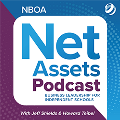|
Article by Kelly A. Garnes, Gill St. Bernard’s School
Picture this. Your evaluation process with a longtime member of your team has become spotty, especially with the many challenges brought on by the pandemic. You haven’t had a chance to check in recently. Unfortunately, the person begins to display behaviors not aligned with your school’s values. You address them several times, either verbally or perhaps with an indirect email. The behavior continues. The employee does not understand that you are concerned. Mission alignment has gone off course.
The behavior continues until it’s untenable to have them on the team, and you discuss it with the person. They’re blindsided. They’re hurt. It’s a mess. You feel you’ve communicated with them and provided plenty of opportunities to correct course. They hastily threaten legal action, and your simple conversation is now more complicated.
Next, you must dig through paperwork to see when, where and how you informed the team member that their work needs improvement. Now the situation is urgent. If you had a framework and timeline, you would have been compelled to memorialize the conversations and would have them to reference.
I am fortunate to currently work in an environment where we avoid these difficult situations. How? We prepare. It’s considerable work. However, we all appreciate the performance management framework and its implementation. It communicates a message — it informs the community and the staff of the organization’s core values, which become actionable behaviors. It gives leaders the opportunity to model these behaviors and gives space to realign and reset if the team or an individual falls off track. It encourages a growth mindset, that nothing is perfect and mistakes will be made, but iterative learning is possible over the long term.
Setting up this framework feels daunting. It can be a big fight, and you may be tempted to push it off, telling yourself you can work on it tomorrow and that it’s not as urgent as a student issue or parent complaint. I suggest that having a framework that communicates your school’s core values and behaviors is at least as urgent, if not more urgent, than most parent concerns. By creating a strong performance framework, accompanying evaluation, management evaluation trainings and a well-communicated timeline, you keep your school on the path to success and proactively manage employee issues and concerns.
Here are five key tenets when considering why you should create or update your performance management framework.
- Your framework will bring to life your school’s values. This performance management framework is based off your school’s strategic plan set by the board of trustees and your head of school. Deciding to establish it forces administrative teams to communicate and measure what is important to the community. It sets the vision and direction to which others can align, add and adjust.
- It encourages fairness, as a performance management framework levels the playing field for employees. If there is no core system or framework, teams will look and feel different across the school, and will be judged by different criteria. Measure what you treasure. Colleagues need to know exactly what you will measure, how you plan on measuring it and when this measurement will be memorialized. This allows them time to get into the correct mindset, know when to ask for help and complete the tasks critical to the organization.
- Establishing and implementing a framework can boost morale. If done correctly, strong employees receive the appropriate praise while other employees can get the resources they need to correct behaviors that do not align with the mission. No one is blindsided, and teammates feel appreciated and seen.
- With an established framework, you protect the school from unwanted litigation and accusations that you did not have the conversations needed to correct behaviors, to push performance and essentially advocate for your students. By communicating what you need your workers to do, you protect precious resources for students.
- A framework can eventually increase enrollment and retention, as employees will produce high-quality work, reflect the school’s mission and excite parents because their children are positively impacted, likely boosting their satisfaction with your school.
The benefits of having a performance management process far outweigh the sticky, sometimes messy work of establishing and aligning behaviors into a codified system that becomes established in our community. All of our work is centered on the wellbeing of the students in our charge. Having a clear rubric for what behaviors adults on campus are to emulate will eventually help our students reach their full potential. It’s certainly not an easy endeavor but one that is fully worth the effort.
Kelly A. Garnes is CFO at Gill St. Bernard’s School, a preschool–grade 12 school with 637 students in Gladstone, New Jersey.
In Mission & Motivation, an independent school leader shares a core belief and/or source of guidance or inspiration. Interested in contributing? Please email netassets@nboa.org. In the subject line, type MISSION & MOTIVATION.
H



